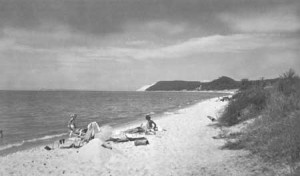A Study of the Park and Recreation Problem of the United States

In 1936, Congress passed the Park, Parkway and Recreational Area Study Act, which directed the National Park Service to survey and rank lands throughout the country according to their recreational potential – though Department of Agriculture lands, including National Forests were excluded. The study, which echoed other New Deal-era centralized planning projects, aimed to gather and recreation-data on a national scale. With more resources and time at its disposal, the NPS completed a far more detailed inventory than was possible in 1934. The final product (published in 1941), “A Study of the Park and Recreation Problem of the United States,” featured reports, with accompanying maps, on 34 states. It recognized, well before the post World War II baby boom and accompanying suburbanization boom, that demand for outdoor recreation in the United States was on distinct upswing.
It is also significant to note that the 1936 bill authorized NPS to assist states with their planning efforts. This trend continued throughout the 20th century with the development of programs such as Rivers, Trails and Conservation Assistance (RTCA) and the Land and Water Conservation Fund.


